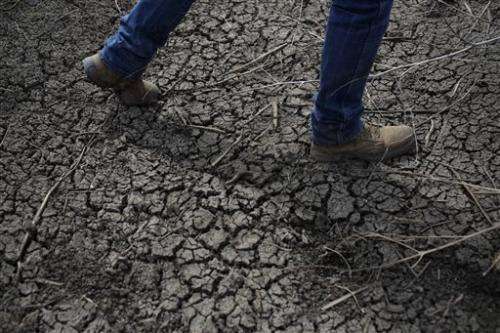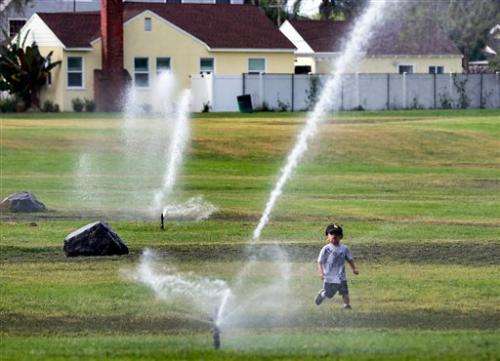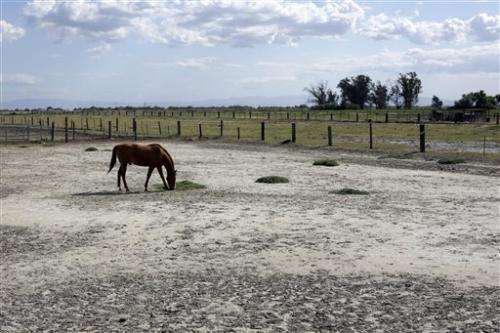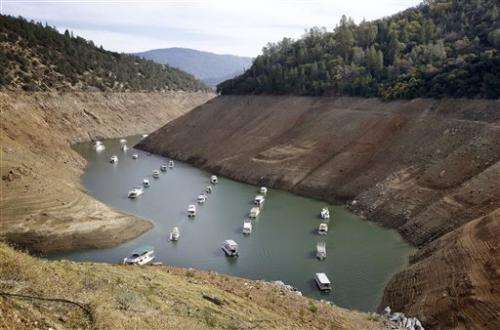Cutting back on water use: Q&A on California's drought

The stubborn drought gripping California is dragging into a fourth year, prompting Gov. Jerry Brown this week to call for mandatory cutbacks in water use across the state. The drastic action marked the first time in California's history that involuntary water restrictions have been ordered, underscoring the seriousness of the drought.
Here are key things to know about the current dry spell:
___
Q: How bad is the drought?
A: California is in the midst of one of its most severe droughts in modern history. The state has experienced below-normal precipitation the past several winters, taking a toll on reservoirs.
The Sierra Nevada snowpack is at 5 percent of normal, the lowest since record-keeping began in 1950. With the wet season over and with no major rainfall in the forecast, parched conditions will continue.
___
Q: How does California get its water?
A: The Sierra snowpack is a key element of California's water supply. About one-third of the state's water comes from snowpack that melts in the spring and summer, recharging groundwater and replenishing reservoirs. But with hardly any snow recorded during the last survey of the year, there will be little runoff to refill half-empty reservoirs.
Many Southern California cities get their drinking water from the Colorado River basin, which supplies water to about 40 million people and 4 million acres of farmland in seven states.

Brown's order called for investment in new water technologies and the streamlining of water projects such as desalination plants that turn ocean water into drinking water. Such facilities, however, are expensive to build.
___
Q: What has been done already to try to curb water use?
A: Before the executive order calling for mandatory water conservation, Brown in January 2014 asked residents to voluntarily slash water use by 20 percent. Many places around the state failed to meet that goal.
In November, voters overwhelming approved a $7.5 billion water bond, which aims to expand the state's water storage capacity to better weather droughts. Much of the money is earmarked for specific uses such as water recycling and treatment projects and cleaning up contaminated groundwater. About $2.7 billion is still up for grabs.
___
Q: Why weren't more stringent restrictions put in place earlier?
A: Since voluntary water cutbacks failed to make a dent in the state's drought problem, the next step was to call for mandatory water savings.

There was some hope that California would get much-needed rain this winter. But after a promising early start, much of the winter has been dry.
___
Q: What happens next?
A: The state Water Resources Control Board will draft emergency regulations to carry out the governor's mandatory order. Water providers should start showing reduced water use beginning this summer.

The state also will work with local governments to rip out 50 million square feet of lawns and replace them with drought-tolerant plants.
Local water districts will be in charge of enforcing water reductions. Residents likely will see water rates increase, but rationing is still a long way off.
© 2015 The Associated Press. All rights reserved.




















